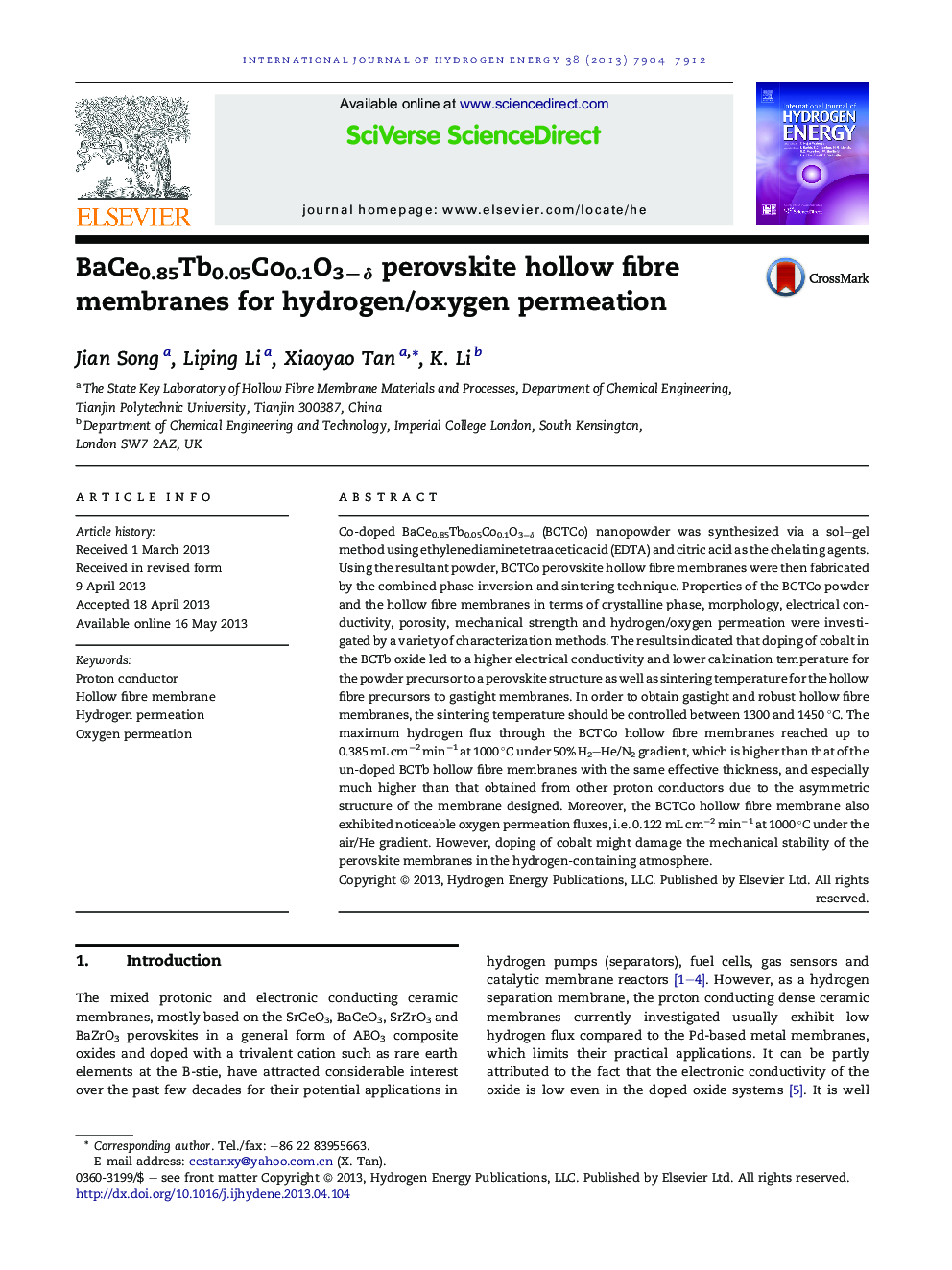| Article ID | Journal | Published Year | Pages | File Type |
|---|---|---|---|---|
| 1273646 | International Journal of Hydrogen Energy | 2013 | 9 Pages |
•Asymmetric BaCe0.85Tb0.05Co0.1O3−δ hollow fibers are prepared and characterized.•Doping of cobalt leads to higher conductivity and lower calcination temperature.•The sintering temperature for gastight BCTCo hollow fibres is between 1300 and 1450 °C.•Hydrogen flux reaches 0.385 mL cm−2 min−1 at 1000 °C under 50% H2–He/N2 gradient.•Oxygen flux reaches 0.122 mL cm−2 min−1 at 1000 °C under air/He gradient.
Co-doped BaCe0.85Tb0.05Co0.1O3−δ (BCTCo) nanopowder was synthesized via a sol–gel method using ethylenediaminetetraacetic acid (EDTA) and citric acid as the chelating agents. Using the resultant powder, BCTCo perovskite hollow fibre membranes were then fabricated by the combined phase inversion and sintering technique. Properties of the BCTCo powder and the hollow fibre membranes in terms of crystalline phase, morphology, electrical conductivity, porosity, mechanical strength and hydrogen/oxygen permeation were investigated by a variety of characterization methods. The results indicated that doping of cobalt in the BCTb oxide led to a higher electrical conductivity and lower calcination temperature for the powder precursor to a perovskite structure as well as sintering temperature for the hollow fibre precursors to gastight membranes. In order to obtain gastight and robust hollow fibre membranes, the sintering temperature should be controlled between 1300 and 1450 °C. The maximum hydrogen flux through the BCTCo hollow fibre membranes reached up to 0.385 mL cm−2 min−1 at 1000 °C under 50% H2–He/N2 gradient, which is higher than that of the un-doped BCTb hollow fibre membranes with the same effective thickness, and especially much higher than that obtained from other proton conductors due to the asymmetric structure of the membrane designed. Moreover, the BCTCo hollow fibre membrane also exhibited noticeable oxygen permeation fluxes, i.e. 0.122 mL cm−2 min−1 at 1000 °C under the air/He gradient. However, doping of cobalt might damage the mechanical stability of the perovskite membranes in the hydrogen-containing atmosphere.
